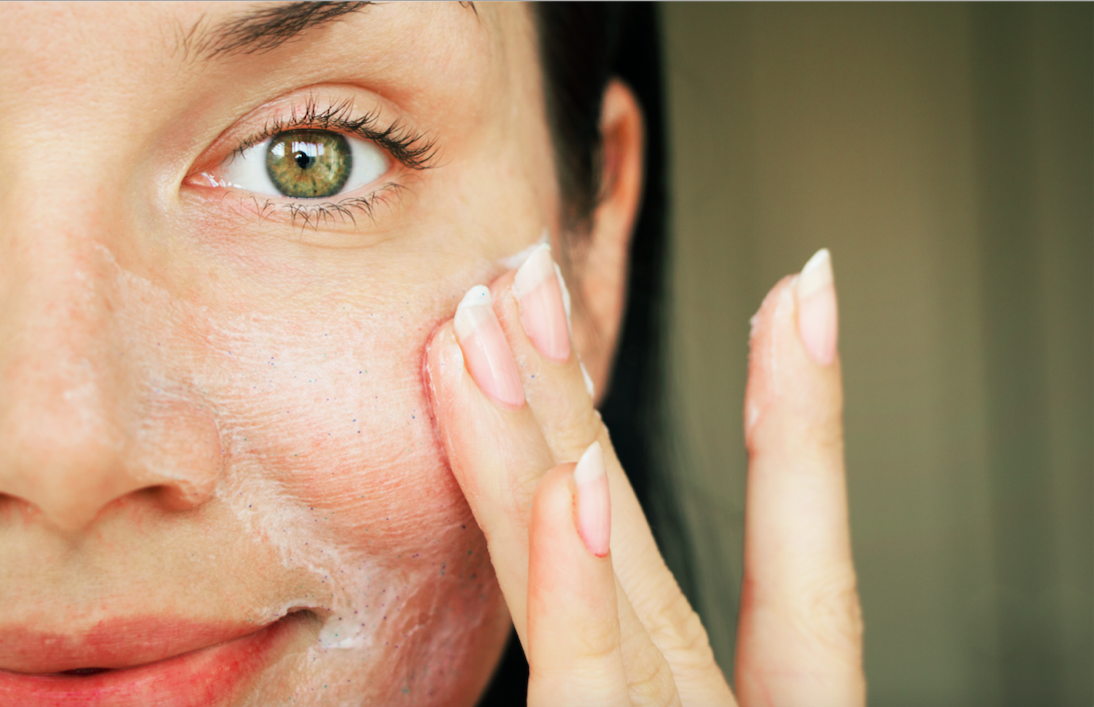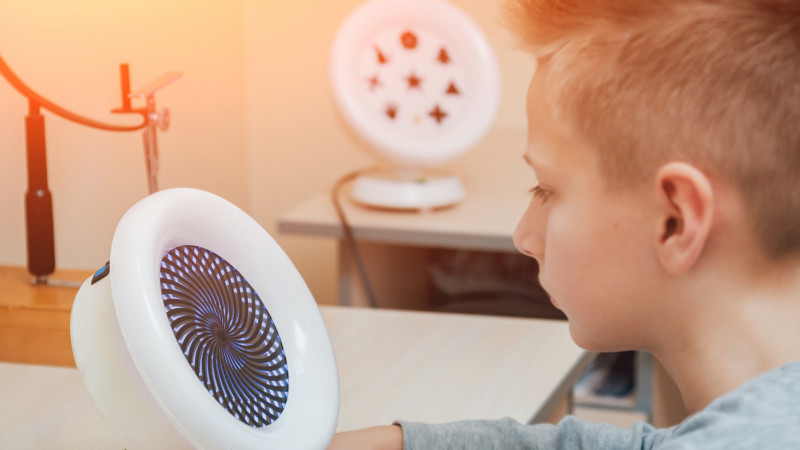Blepharitis
Blepharitis (pronounced blef-uh-RYE-tis) is an eye condition hallmarked by inflamed eyelashes and eyelids that can cause a variety of irritating and sore symptoms.
Are you suffering from irritated, inflamed or perhaps redness around your eyes? These are all symptoms of blepharitis, a common condition that occurs when the small oil glands in the eyelids and around the base of the eyelashes block. When it’s in full effect, blepharitis can be very uncomfortable and sore.
Blepharitis usually affects both eyes, along the edges of the eyelids and is often a chronic condition that can be uncomfortable and unsightly. It can get worse when a person with blepharitis rubs their slightly sore and inflamed eyes, causing more inflammation and further irritation. However, it won’t usually cause permanent damage and is not contagious.

What causes blepharitis?
Blepharitis can occur alongside a combination of factors, including:
-
Allergies, especially to contact lens solutions, eye makeup or face creams
-
Dandruff on your scalp and/or eyebrows (seborrhoeic dermatitis)
-
Psoriasis, a common skin condition
-
Excess skin bacteria growth
-
Rosacea, a skin condition where the face turns red
Blepharitis is usually linked with overgrown bacteria living along the edge of the eyelid, and base of each individual eyelash. Over a period of time, these bacteria can multiply and create biofilm - which becomes a toxic environment, similar to plaque forming on your teeth.
Eyelash mites (yes, those are a real thing) called Demodex feed on the biofilm, which leads to many many mites! And only makes your eye inflammation worse.
Bacteria in the biofilm also produces substances called exotoxins, which cause the tiny glands that stash away oil into your tears, to be inflamed. This then leads to another eye condition called meibomian gland dysfunction, which both causes and worsens dry eye discomfort.
What are the symptoms of blepharitis?
Typical symptoms include:
-
Red eyes
-
Watery eyes
-
Gritty sensation
-
Stinging sensation
-
Swelling of the eyelids
-
Crusting on the upper eyelids around the base of lashes
Development of blepharitis
Below is what blepharitis can look like - from the start of experiencing symptoms, to a chronic example.
Types of blepharitis
There are two types of blepharitis:
Anterior blepharitis: the top of the external eyelid is affected, directly where eyelashes stem from. There are a variety of causes of this type of blepharitis such as staphylococcal infection (where the eyelash has bacteria causing infection), dermatitis of the eyelid, allergies to cosmetics or sometimes an infestation of the eyelid from a bug.
Posterior blepharitis: targets the inner eyelid closer to the eyeball. Posterior blepharitis is caused by the glands in the eyelid that produce oil to become blocked due to abnormalities resulting in irritated and sore eyelids.

Blepharitis development
Conditions linked to blepharitis
Left untreated, blepharitis will only worsen. Those who have or develop chronic blepharitis, may also have an associated condition or complication, such as:
Stye: a bacterial infection at the base of an eyelash or inside an oil-producing gland in the eyelid. Stye’s cause a painful red bump at the edge of your eyelid.
Chalazion: a clogged oil gland in an eyelid that may begin as a stye. Chalazion causes a red, swollen bump on the eyelid.
Dry eye syndrome: clogged oil glands in the eyelid can cause tear film to evaporate too quickly, leading to dry eye problems.
Eyelash problems: chronic blepharitis can leave your lid margin scarred, which leads to misdirected eyelashes, or in some cases, eyelash loss.
Cornea problems: if blepharitis causes your eyelashes to grow towards your eyes (rather than away from), these misdirected lashes could rub against the front of your eye, which increases your risk of eye infections and leads to the very painful corneal abrasion.
Pink eye: chronic blepharitis is also known to cause episodes of a form of conjunctivitis, called bacterial pink eye. If you have both pink eye and blepharitis at the same time, this is called blepharoconjunctivitis.
Contact lens discomfort: blepharitis causes contact lens discomfort and can force people to give up wearing contacts.
Treatment
There are a variety of treatment options for blepharitis. However, the most effective treatment is a combination of twice-daily warm compresses and once-daily eyelid washes. Some other first steps are:
Warm compresses: using a blepharitis-specific treatment pad such as an eye compress mask. This is an effective way of both treating symptoms to open up the blocked oil glands, but also regular use can prevent the ducts blocking, providing long-term relief. Why use this mask? A blepharitis-specific treatment pad is much more effective than using a face cloth as the heat is sustained for a longer period, allowing more time for the glands to open and the oil to melt. A blepharitis-specific treatment pad is also more effective than a traditional wheat bag, as the heat that is emitted is a moist, humid heat which alleviates any associated dry eye symptoms; a wheat bag can exacerbate any dry eye and allergy symptoms.
Eyelid hygiene: is key to reducing and controlling symptoms of blepharitis. Using an eyelid wash such as Systane Lid Wipes or Blephadex foam cleanser kills the nasty bacterias around the eyelids that heighten the symptoms of blepharitis.
Limit make-up and eye cream use: if you’ve been diagnosed with blepharitis, it's important to limit your eye make-up use. Make up can irritate sensitive eyes and block the oil glands, which can worsen your symptoms. When using face or eye creams, a handy tip is to apply them no closer than the bone around your eye. The cream will filter to the delicate skin around your eyes, but it won’t seep into the eyes, which would irritate them even more.
Symptoms not letting up?
If those pesky symptoms still persist, we have some other options that could help. It’s best to book an appointment with your optometrist to discuss the following:
Intense Pulsed Light Therapy: IPL is a technologically advanced treatment that has been clinically proven to combat the symptoms of dry eyes. Clinical trials indicate that patients treated with IPL therapy experienced an 86% improvement in the symptoms of chronic dry eyes (burning, irritated eyes, sensitive to light, fluctuating vision, grittiness and blurring).
Meibomian Gland Expression: this treatment can be done on its own, or for the maximal effect, done immediately after an IPL treatment.
Blephasteam Goggles: an in store treatment for patients with chronic Blepharitis, these electric goggles are very effective for relieving dry eye, blepharitis and meibomian gland dysfunction (MGD) symptoms. They work by delivering steam directly into the eyes, melting the waxy oil. Made from medical-grade rubber, they look a bit like swimming goggles. Disposable rings are placed inside and changed after each session.
Medications: in more severe cases, your optometrist may prescribe topical antibacterial creams, anti-inflammatory eye drops or oral medications. These medications are often prescribed in conjunction with other blepharitis treatments for the best results.
Lubricating eye drops: provide temporary relief for dry eye and blepharitis symptoms, by lubricating and soothing the eye.
Prevention
For many people, practicing good eyelid hygiene can be one of the most successful ways of controlling symptoms of blepharitis. This includes ensuring that you wash your face day and night, remove any eye make up, wash your scalp regularly and avoid touching your eyes.
As blepharitis is an ongoing condition, it’s important that even after the symptoms have gone, you continue to maintain excellent hygiene practices to minimise future flare ups.

FAQs
Can blepharitis be cured? Unfortunately, blepharitis is a chronic condition, however can be successfully managed through various treatments, see above for more info.
How long does blepharitis take to clear up after treatment? Once treatment is prescribed, many people find within a couple of days to a few weeks that symptoms begin to clear.
Is blepharitis contagious? No, the good news is that blepharitis is not contagious.
How long do I have to use treatment for blepharitis? As it is a chronic condition, you may have to continue with various treatment methods such as warm compress and lid washes to prevent the condition from flaring up.
Can children get blepharitis? Yes, it’s a common condition in both adults and children.
Book an appointment
If you think you may be suffering from blepharitis or another discomforting eye issue, book an appointment with one of our specialised optometrists.


